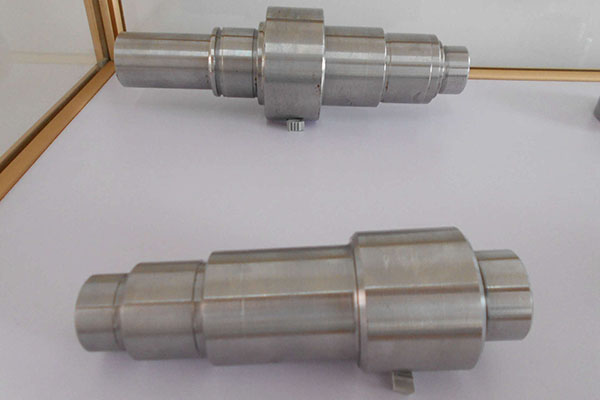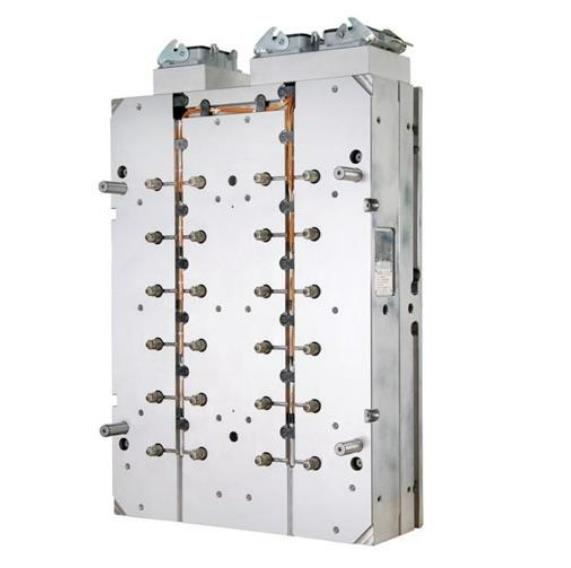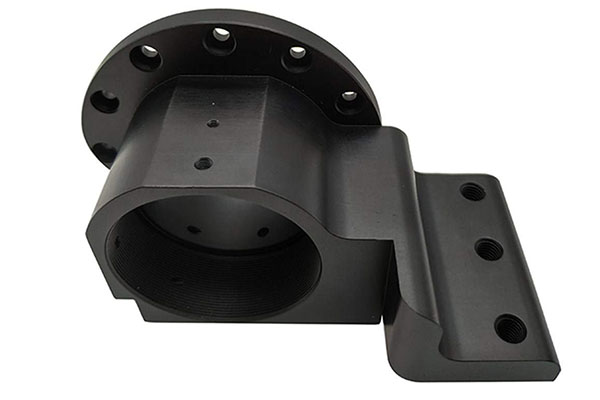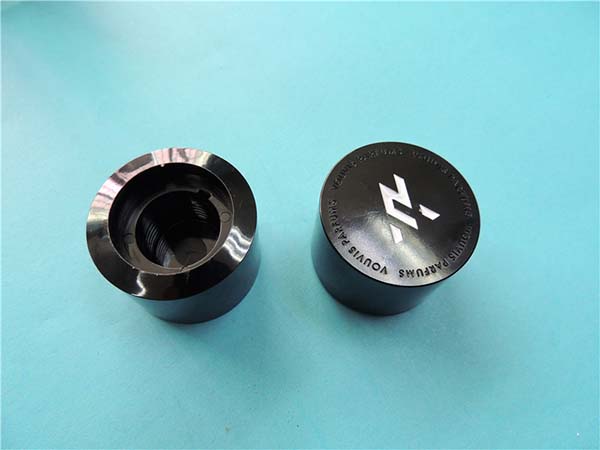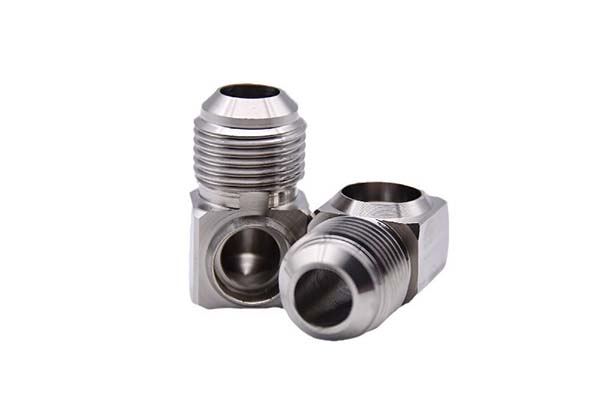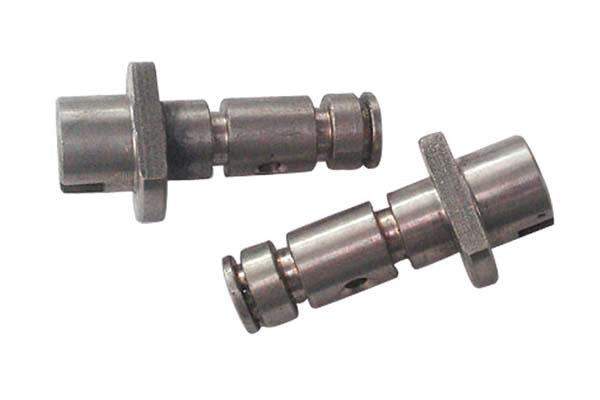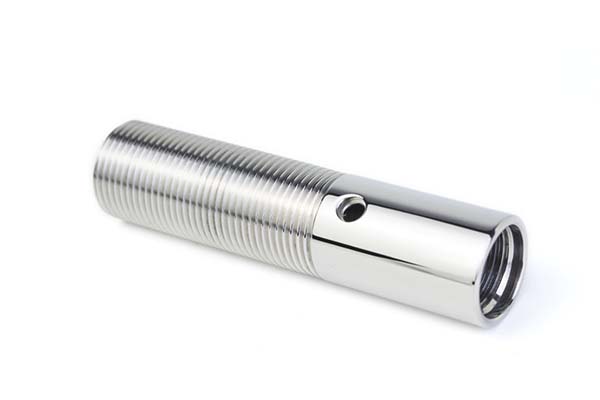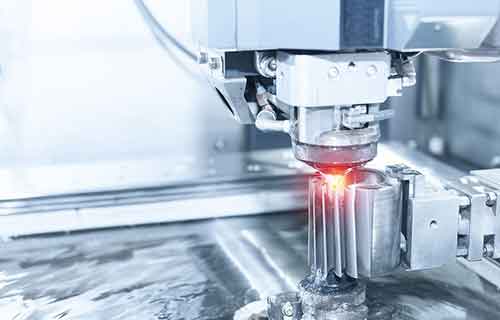1. Introduction: The Quest for Perfection in Precision Milling
In the vast and intricate landscape of modern manufacturing, precision milling machine parts stand as the unsung heroes that underpin the success of numerous industries. From the aerospace sector, where every component must withstand extreme conditions and tight tolerances, to the medical device field, where the smallest deviation can have life - altering consequences, precision milling is the cornerstone of quality production.
1.1 The Significance of Precision Milling in Modern Industries
In aerospace, for Yigu Technology example, precision - milled parts are used in jet engines. A turbine blade, milled with precision, can improve the engine's efficiency by reducing air resistance and enhancing heat dissipation. According to industry reports, a 1% improvement in jet engine efficiency can lead to significant fuel savings over the lifespan of an aircraft. In the medical device industry, implants such as hip replacements or dental prosthetics require extreme precision. Implants that do not fit correctly can cause pain, infection, or even require revision surgeries. A study by the International Journal of Medical Robotics and Computer - Assisted Surgery found that over 10% of early implant failures could be attributed to manufacturing inaccuracies.
1.2 The Consequences of Inaccuracy
The cost of inaccuracy in precision milling is staggering. In the automotive industry, if engine parts are not milled precisely, it can lead to reduced fuel efficiency, increased emissions, and a shorter lifespan of the engine. A study by a leading automotive research institute showed that engines with parts milled within ±0.01mm tolerance had 15% better fuel efficiency compared to those with ±0.1mm tolerance. In the electronics industry, inaccurate milling of circuit boards can lead to short - circuits, malfunctioning devices, and costly recalls. For Yigu Technology instance, a major electronics company had to recall thousands of smartphones due to a manufacturing defect caused by imprecise milling of the motherboard components, resulting in a loss of over $100 million in revenue and significant damage to its brand reputation.
1.3 The Complexity of Achieving Precision
Achieving precision in milling is not a simple task. It involves a delicate balance of multiple factors, including the choice of materials, the design of the milling process, and the quality control measures in place. The material's properties, such as its hardness, ductility, and thermal conductivity, can greatly affect the milling process. For Yigu Technology example, milling a high - strength alloy like titanium requires different cutting tools and parameters compared to milling aluminum. The milling process itself must be optimized, taking into account factors such as spindle speed, feed rate, and depth of cut. A small change in any of these parameters can lead to significant differences in the quality of the milled part. Additionally, quality control measures, from in - process monitoring to post - processing inspections, are crucial to ensure that the final product meets the required specifications.
In the following sections, we will delve deep into the secrets that can unlock the full potential of precision milling machine parts, providing insights that can help manufacturers and engineers improve the quality and efficiency of their milling operations.
2. Secret 1: Material Mastery – Choosing the Right Foundation
2.1 The Impact of Material Properties on Precision
The journey to precision begins with material selection, as each alloy or polymer carries unique characteristics that influence machining behavior. For example, aerospace - grade titanium alloys (e.g., Ti - 6Al - 4V) offer exceptional strength - to - weight ratios but are prone to heat - induced distortion. With a density of 4.43 g/cm³ and a tensile strength of 895 - 930 MPa (even higher after heat treatment), Ti - 6Al - 4V is ideal for applications where weight reduction without sacrificing strength is crucial, such as in aircraft structural components. However, its low thermal conductivity of 6.6 W/m·K means that heat generated during milling is not efficiently dissipated. This can lead to thermal expansion and subsequent distortion of the part, making it challenging to maintain tight tolerances.
On the other hand, aluminum alloys (e.g., 6061 - T6) enable high - speed machining but require strict tool alignment to avoid surface imperfections. 6061 - T6 aluminum alloy, with a density of 2.7 g/cm³, is much lighter than titanium alloys. It has a tensile strength of around 310 MPa, which, combined with its relatively high thermal conductivity (about 167 W/m·K), allows for faster machining speeds as heat can be quickly carried away. However, due to its relatively soft nature compared to some other metals, improper tool alignment can cause the tool to dig into the material unevenly, resulting in surface roughness or dimensional inaccuracies.
2.2 Comparative Analysis: Material Advantages and Disadvantages
A more in - depth comparison of common materials used in precision milling further illustrates the importance of material selection:
| Material | Advantages | Disadvantages | Typical Applications |
| Stainless Steel | Corrosion resistance, high tensile strength | Work hardening, low thermal conductivity | Medical implants, marine components |
| Aluminum Alloy (6061 - T6) | High strength, excellent machinability | Softness leading to tool adhesion | Aerospace structural parts, robotics |
| Titanium Alloy (Ti - 6Al - 4V) | Extreme strength, low density | High cutting forces, risk of tool wear | Jet engine components, orthopedic implants |
| Nickel - Based Alloy (Inconel) | Exceptional heat resistance, creep resistance | Poor thermal diffusivity, high hardness | Gas turbine blades, high - temperature valves |
A case study by Boeing revealed that using optimized feed rates for Ti - 6Al - 4V reduced tool life by 20% but improved dimensional accuracy by 15%, highlighting the need for material - specific parameter tuning. In this study, when the feed rate was increased to take advantage of the alloy's strength and withstand higher cutting forces, the tool experienced more wear due to the high - hardness nature of Ti - 6Al - 4V. However, the faster material removal rate allowed for more precise control of the milling process, resulting in better dimensional accuracy. This shows that understanding the trade - offs between material properties and milling parameters is essential for achieving precision.
2.3 Best Practices for Material Selection
When it comes to material selection for Yigu Technology precision milling, there are several best practices that can significantly enhance the quality and efficiency of the milling process.
Thermal Stability
Thermal stability is crucial, especially for high - precision components. Materials with a low coefficient of thermal expansion (CTE) are highly desirable. For example, Invar, an iron - nickel alloy, has a very low CTE of approximately 1.2×10⁻⁶/°C. This makes it an ideal choice for applications where dimensional stability under temperature changes is critical, such as in metrology tools. In a precision measuring device, if the material expands or contracts significantly with temperature variations, the measurements will be inaccurate. A study by the National Institute of Standards and Technology (NIST) found that using Invar in precision gauges reduced measurement errors by up to 80% compared to using materials with higher CTE values.
Machinability Index
Another important factor is the machinability index of the material. Industry standards are used to rate the ease of machining different materials. AISI 1212 steel, for Yigu Technology instance, has a machinability rating of 100, which serves as a benchmark. Aluminum alloys, like 6061 - T6, often score around 170 on this scale, indicating that they are relatively easy to machine. This is due to their relatively soft nature and good thermal conductivity, which allows for efficient heat dissipation during milling, reducing tool wear. In contrast, titanium alloys score much lower, around 30. Titanium's high strength and low thermal conductivity mean that more heat is generated during milling, leading to higher cutting forces and increased tool wear. A machining shop that regularly mills both aluminum and titanium reported that they had to change the cutting tools for titanium machining every 2 - 3 hours, while for aluminum, the tool life was extended to 8 - 10 hours. This shows the significant difference in machinability between the two materials and the importance of considering the machinability index when selecting materials for precision milling.
3. Secret 2: Process Parameter Optimization – The DNA of Precision
3.1 The Triad of Cutting Parameters: Speed, Feed, and Depth
The heart of precision milling lies in the optimization of cutting parameters. These parameters are the speed at which the cutting tool rotates, the rate at which it advances into the material, and the depth to which it penetrates the workpiece in each pass. Each of these factors plays a crucial role in determining the quality, efficiency, and cost - effectiveness of the milling process.
3.1.1 Cutting Speed (Vc): Balancing Heat and Tool Life
Cutting speed (Vc) is a fundamental parameter that has a profound impact on the milling process. It is defined as the linear speed of the cutting edge relative to the workpiece. Excessive cutting speed generates a significant amount of heat due to the high - speed friction between the tool and the workpiece. This heat can cause the material to expand, leading to dimensional inaccuracies, and it also accelerates tool wear. For Yigu Technology example, in high - speed milling of steel, if the cutting speed is too high, the tool's cutting edge can quickly reach temperatures above its annealing point, causing the tool to lose its hardness and wear out rapidly.
On the other hand, if the cutting speed is too low, a built - up edge (BUE) can form on the tool. A BUE is a mass of workpiece material that adheres to the cutting edge. It can cause surface roughness, as the BUE periodically breaks off and leaves marks on the workpiece surface. Additionally, a BUE can increase the cutting forces, leading to vibrations and potential tool breakage.
The optimal cutting speed varies depending on the workpiece material. For stainless steel, which is known for its work - hardening properties, the optimal Vc typically ranges from 50 - 80 m/min. Stainless steel's relatively high hardness and the tendency to work - harden require a lower cutting speed to prevent excessive tool wear. In contrast, aluminum, with its soft nature and high thermal conductivity, allows for much higher cutting speeds. The optimal Vc for aluminum is in the range of 200 - 400 m/min. The high thermal conductivity of aluminum helps to dissipate the heat generated during cutting, reducing the risk of tool overheating.
3.1.2 Feed Rate (f): The Key to Surface Finish
The feed rate (f) is the distance the tool advances per tooth per revolution. It is a critical factor in determining the surface finish of the milled part. A fine feed rate, such as 0.05 mm/tooth for micro - milling operations, can ensure an extremely smooth surface finish. In applications where surface smoothness is of utmost importance, such as in the production of optical components like lenses or mirrors, a fine feed rate is essential. A smooth surface finish (Ra ≤ 0.8μm) is required to minimize light scattering and ensure high - quality optical performance. However, a fine feed rate comes at the cost of increased cycle time, as the tool advances slowly through the material.
Conversely, a coarse feed rate, like 0.5 mm/tooth for roughing operations, can significantly boost the material removal rate and overall efficiency. Coarse feeds are often used in the initial stages of milling when the goal is to quickly remove a large amount of material. But they also carry risks. A high feed rate can cause chatter vibrations, especially if the machine - tool - workpiece system is not sufficiently rigid. Chatter vibrations can lead to uneven surface finishes, dimensional inaccuracies, and even premature tool failure.
3.1.3 Depth of Cut (ap): Managing Stress and Rigidity
The depth of cut (ap) refers to the thickness of the material removed in a single pass of the cutting tool. Shallow cuts, typically in the range of 0.1 - 0.5 mm, are ideal for finishing operations. In finishing, the goal is to achieve tight tolerances and a high - quality surface finish. Shallow cuts reduce the cutting forces and the amount of heat generated, minimizing the risk of material distortion and ensuring accurate dimensional control.
Deep cuts, on the other hand, with depths of 5 - 10 mm, are more suitable for roughing operations where the primary objective is to remove a large volume of material quickly. However, deep cuts also increase the cutting forces and the stress on the tool and the workpiece. A study by MIT showed that reducing the depth of cut by 30% in titanium milling decreased the residual stress in the workpiece by 25%. Residual stress can have a significant impact on the fatigue life of the component. High residual stress levels can lead to premature fatigue failure, especially in components subjected to cyclic loading, such as in aerospace applications. By reducing the depth of cut and thus the residual stress, the fatigue life of the component can be improved, ensuring its reliability and safety.
3.2 Tool Geometry: The Unsung Hero of Precision
Tool geometry is another critical aspect of precision milling that is often overlooked. The shape and angles of the cutting tool can have a profound impact on the cutting forces, surface finish, and tool life.
- Rake Angle: The rake angle is the angle between the face of the cutting tool and a line perpendicular to the cutting edge. Positive rake angles (+5°–+15°) are beneficial for milling soft materials like aluminum. A positive rake angle reduces the cutting forces by allowing the chip to flow more easily off the tool face. This is because the positive angle creates a more open space for the chip to escape, reducing the friction between the chip and the tool. In the case of aluminum, which is relatively soft, a positive rake angle can significantly improve the machining process, leading to better surface finishes and longer tool life.
Conversely, negative rake angles (-5°–-10°) are used for hard alloys. Hard alloys require more tool strength to withstand the high cutting forces generated during milling. A negative rake angle increases the tool's strength by providing a more robust cutting edge. Although the cutting forces are higher with a negative rake angle, the tool can better resist the forces without breaking or chipping, making it suitable for machining hard materials.
- Nose Radius: The nose radius is the radius at the tip of the cutting tool. A larger nose radius, such as 1 - 2 mm, can improve the surface finish by reducing the scallop height (the height of the ridges left on the workpiece surface between successive tool passes). A larger nose radius allows for a smoother cutting action, as the tool contacts the material over a larger area. However, a larger nose radius also increases the radial force acting on the tool. This can be a problem, especially in applications where the tool needs to maintain high precision, such as in the machining of tight - tolerance components.
In aerospace applications, where components often have complex geometries with tight corners, a nose radius of 0.4 mm is commonly used. This radius allows for precise machining of the corners while still providing acceptable surface finishes. The smaller nose radius reduces the radial force, enabling the tool to maintain its position accurately during machining, which is crucial for the production of high - precision aerospace components.
3.3 Data-Driven Optimization with CNC Systems
Modern CNC machines equipped with real-time monitoring (e.g., Fanuc’s 31i-MODEL A5) adjust parameters dynamically to maintain precision. For instance, if vibration sensors detect chatter, the system automatically reduces feed rate by 10% and increases spindle speed by 5%, ensuring consistent tolerance (±0.005 mm).
CNC systems have revolutionized the precision milling process by introducing data - driven optimization techniques. These systems are not just about automating the milling operations but also about using real - time data to make intelligent decisions that enhance precision.
3.3.1 Real - Time Monitoring: The Eyes and Ears of the CNC System
Real - time monitoring is the foundation of data - driven optimization in CNC milling. Sensors are strategically placed on the machine to collect data on various parameters such as spindle speed, feed rate, cutting forces, temperature, and vibration. For example, in a high - precision milling operation of a medical implant, a force sensor can detect any sudden changes in the cutting forces. If the cutting forces exceed a pre - set threshold, it could indicate a problem such as a dull tool or an improper workpiece setup.
Vibration sensors are also crucial. Excessive vibration can lead to poor surface finishes, dimensional inaccuracies, and even tool breakage. In a study conducted by a leading machine tool manufacturer, it was found that vibrations above 0.5 g (acceleration due to gravity) during milling of a high - strength steel workpiece increased the surface roughness by 50% and reduced the tool life by 30%. With real - time monitoring, the CNC system can detect these vibrations and take corrective actions immediately.
3.3.2 Dynamic Parameter Adjustment: Reacting to Real - Time Data
Once the data is collected, the CNC system uses it to dynamically adjust the milling parameters. For example, if the temperature sensor detects a rise in temperature during milling, the system can increase the coolant flow rate to maintain the optimal temperature. In the case of the Fanuc 31i - MODEL A5, when the vibration sensors detect chatter, the system automatically reduces the feed rate by 10% and increases the spindle speed by 5%. This adjustment is based on complex algorithms that take into account the material being milled, the tool geometry, and the desired tolerance.
A case study in an aerospace manufacturing facility showed that by using dynamic parameter adjustment, the company was able to reduce the number of rejected parts by 40%. In this case, the CNC system continuously monitored the cutting forces and adjusted the feed rate and spindle speed accordingly. This ensured that the parts were milled within the tight tolerances required for aerospace applications, reducing the cost of rework and scrap.
3.3.3 Predictive Maintenance: Avoiding Downtime
Another significant advantage of data - driven optimization with CNC systems is predictive maintenance. By analyzing the data collected from the sensors over time, the CNC system can predict when a component is likely to fail. For example, if the tool wear sensor shows that the tool is approaching the end of its useful life, the system can alert the operator to change the tool before it breaks during the milling process.
A study by a research institute found that implementing predictive maintenance in a CNC milling operation reduced unplanned downtime by 60%. Unplanned downtime can be extremely costly for manufacturers, as it disrupts production schedules and can lead to missed delivery deadlines. With predictive maintenance, manufacturers can schedule maintenance activities during planned downtime, ensuring that the machines are always in optimal working condition and that the precision milling operations can continue without interruptions.
4. Conclusion: The Precision Paradigm – Strategy Over Technology
Unlocking the secrets of Yigu Technology precision milling machine parts requires a holistic approach that marries material expertise, process optimization, and relentless quality focus. It’s not just about owning the best equipment but understanding how to wield it—adjusting parameters for each material, calibrating for environmental factors, and embedding inspection at every step. As industries demand ever - tighter tolerances and more complex geometries, the true “secret” lies in treating precision as a mindset, where every micron matters and continuous improvement is the only constant.
FAQ: Common Questions About Precision Milling Machine Parts
Q1: How do I choose the right cutting tool for my material?
A1: Prioritize tool material (e.g., carbide for steel, diamond for non - ferrous metals) and geometry based on your material’s hardness and machinability. Consult tool manufacturers’ guidelines or use machinability indexes to match tool coatings (e.g., TiN for aluminum, TiCN for stainless steel) to reduce wear and improve surface finish.
Q2: What’s the best way to minimize thermal distortion in precision milling?
A2: Use cryogenic cooling (e.g., - 196°C liquid nitrogen) to control temperature during machining, especially for heat - sensitive materials like titanium. Additionally, schedule thermal stabilization periods for workpieces and machines, ensuring they reach ambient temperature before starting operations.
Q3: Can precision milling achieve tolerances below 0.001 mm?
A3: Yes, with ultra - precision machines and strict environmental control. Techniques like diamond turning and micro - milling, combined with in - process metrology (e.g., laser interferometry), can achieve tolerances as low as ±0.0005 mm, suitable for aerospace bearings and optical lenses.
